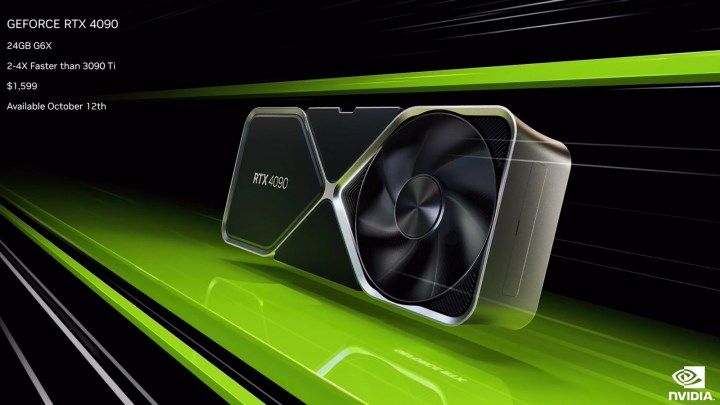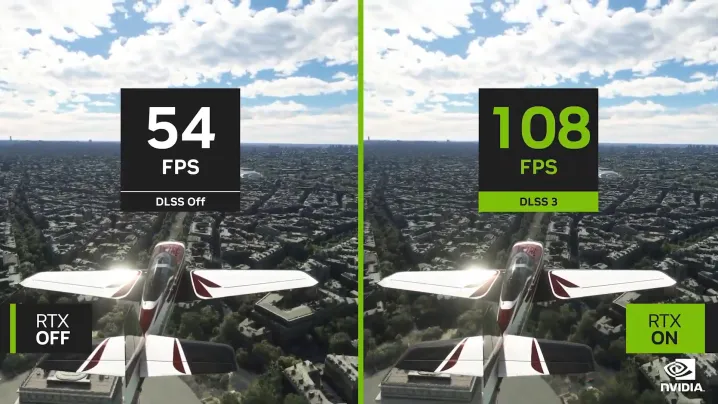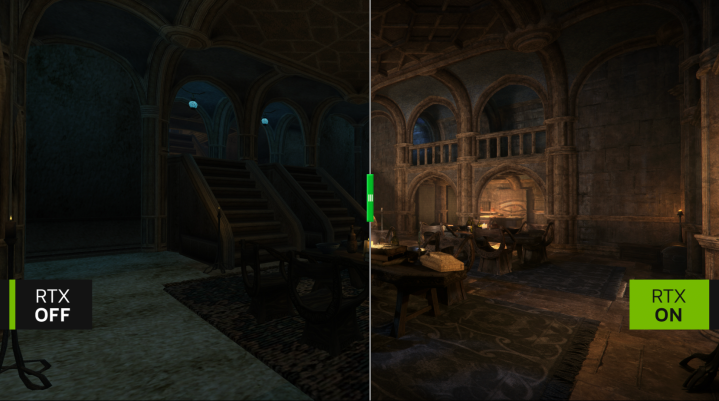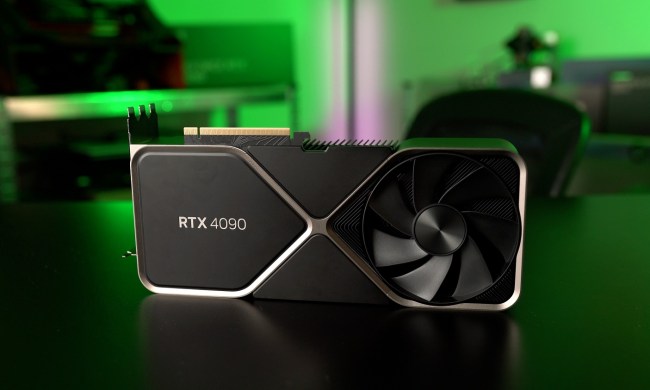The new Nvidia RTX 4090 looks to be absurdly powerful. It’s a hot and power-hungry card too, and even without third-party benchmarks to confirm it, it’s already clear that the RTX 4090 is leaps and bounds ahead of even the best cards from the previous generation.
But is there actually any point to all that power? Sure you can run the existing catalog of AAA games at 4K with ray tracing enabled at over 100 fps, but there’s nothing on the docket that will really push the 4090, and that’s a problem for Nvidia. It may be a while before an exciting new game can show how much the RTX 4090 can really do.
Useless bang for all that buck

By Nvidia’s numbers, the RTX 4090 is about twice as fast as an RTX 3090 Ti and up to four times as fast in ray tracing games where DLSS 3 is enabled. That’s an enormous leap, much more in line with the generational advancements of old than recent generations where incremental improvements and feature updates have been more of the selling point.
But it’s clear even from Nvidia’s own announcement that there isn’t really anything to push you to buy such a card. Higher frame rates and detail settings are always welcome, but if you’ve already played through Cyberpunk 2077, and explored Microsoft Flight Simulator to your heart’s content, the RTX 4090 is just extra horsepower with no room to gallop.
Nvidia had to make a whole new demo environment of its own, Racer RTX, to even have anything new and exciting to show. Elsewhere, it used almost exclusively older AAA games to showcase its new card(s) performance. Sure Microsoft Flight Simulator at 100 fps is impressive, but that game is over two years old already. Cyberpunk 2077’s new RT Overdrive mode with DLSS 3 and improved ray tracing looks great, but that game was pretty underwhelming at launch from a pure fun perspective, and most of those who were excited about it have already played it through.
The only upcoming game Nvidia even mentions in its vague benchmarks for the new card is Warhammer 40,000: Darktide. Considering that’s built on the same engine as 2018’s Vermintide 2, and isn’t filled with expansive environments or especially detailed models, it’s not going to be the most demanding of games.
Even a look at the spread of AAA games coming this year, there isn’t really anything that’s going to blow anyone away graphically. That doesn’t particularly matter from the perspective of gamers, and this predominantly indie gamer sure doesn’t care, but it does make selling a new generation of extremely powerful graphics cards a real hurdle for Nvidia. Especially when it’s looking to raise prices and power demands along with it.
The only new feature is even more performance

Where the RTX 2000 Turing graphics cards promised ray tracing and DLSS support as the reward for early adopters, and the RTX 3000 series promised comfortable frame rates in the most demanding games, RTX 4000 only does that and a bit more. DLSS 3 is its only truly unique feature.
And while it’s not truly exclusive to this generation, Nvidia has said it wouldn’t run well on previous generations of RTX tensor cores. While that claim may sound dubious to the most skeptical, it does at least give one clear benefit for the RTX 4090 compared to its predecessors, but when the purpose of DLSS is to deliver even more performance in the limited number of supporting games, for a card that is already more than fast enough for its current job, it doesn’t do much to encourage early adopters. More than that, its best feature, frame generation, is exclusive to the new 40-series cards.
Ray tracing advancements are good, because
Whether that’s because of its performance limitations, or its still relatively limited use in even big games, doesn’t really matter. The big selling point of Ada Lovelace is, much like Turing and Ampere before it, that it does ray tracing really well, and that just doesn’t seem to be something most gamers are excited about right now.
Maybe modders can save the white elephant

As if in a plea to the wider gaming community, Nvidia did throw a bone to the true RTX evangelists: RTX Remix. It’s a modding tool designed to make it comparatively simple to upscale and add ray-traced lighting to older games, even on antiquated versions of DirectX. Considering the success of ray tracing on games like Quake II and Minecraft, there’s serious potential there for some of the most iconic older games to be given a new lease on life with an unofficial RTX remastering.
That’s a great thing, and I’m certainly excited for some of my favorite older games that still occupy too much of my time to be given the RTX treatment. It’s also important to credit modders with having created some of the most successful game genres of recent years, including MOBAs and battle royale games, so there’s potential with something like this to discover new and exciting ways to play.
But — and this is a big but — is Nvidia really hoping that people spend $1,600 to play a ray-traced remaster of Portal? I certainly wouldn’t, but then I downclocked my RX 6950XT because it was too hot and loud, so I’m probably not the target audience for such a card. Then again, who is?
The RTX 4090 is going to be the most powerful graphics card for some time to come unless RDNA3 is a real surprise. Most likely at some point next year we’ll get some titles that can really push it — perhaps a poorly optimized Ark 2, or maybe Star Citizen will launch another Alpha.
But that’s no good right now, and ultimately leaves anyone who does decide to spend as much as a high-end gaming PC on a single GPU, wondering what they can actually do with it that they couldn’t already do with an RTX 3090 for $500 less.
The answer, for now at least, is not much.



